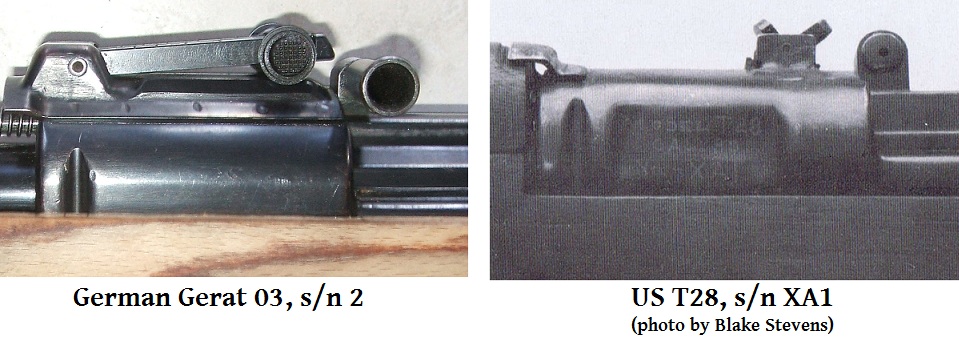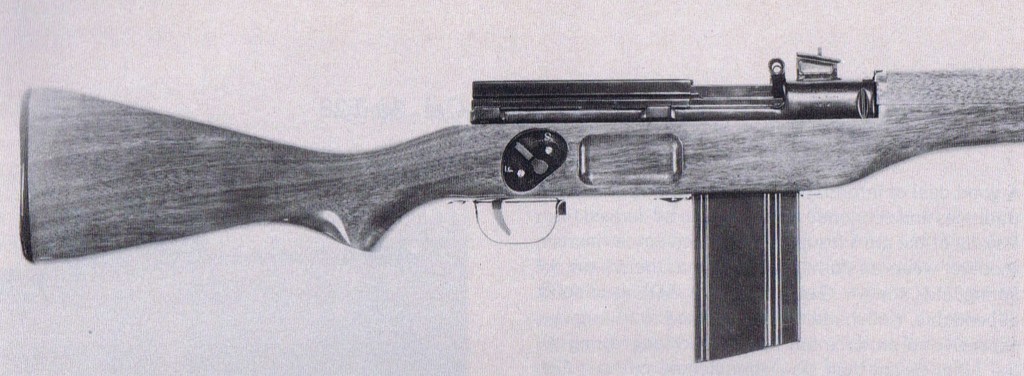In the world of small arms engineering, one of the most exciting developments of World War II was the German work on roller locking and roller-delayed blowback actions. British, French, and Soviet armies were jumping all over each other to take custody of German engineers and prototypes, and these roller guns were particularly interesting to everyone. We know that the French did a lot of work on the concept with the aid of Karl Maier and Ludwig Vorgrimler, and the Spanish eventually worked with Vorgrimler to produce the CETME rifle. The British also worked with roller locking systems and developed the EM1 rifle as the outcome. But what about the US?

As it turns out, the R&D division at Springfield Armory did get its feet wet in the roller locking pool. Captured prototypes had been sent back to Springfield, and in late 1945 an engineer named Cyril Moore took on the project of developing a roller locked, gas operated rifle in the new T65 cartridge (which would eventually become the 7.62mm NATO). Moore’s design closely followed the German Gerat 03, using a gas piston mounted atop the barrel, a stamped sheet metal receiver (and other parts), and very similar bolt and bolt carrier. Note the similarities on the front ends of the receivers:

Moore received pretty minimal funding and support for the project, as the T25 in parallel development was the rifle expected to be the replacement for the M1. Still, it was important to at least pay lip service to alternatives like the T28. After several years of work, Moore had a number of completed prototype guns, and the first test of them was run from September 1948 through January 1949 at Aberdeen Proving Grounds, using guns number 5 and 8. It is important to note that these guns were roller locked, and operated via short stroke gas piston – not a delayed blowback system like the final German wartime iteration of the design.

The report issued after the testing was complete is mixed, noting several areas where the T28 was well liked as well as a number of deficiencies. Overall, it is clear that the rifle suffered from insufficient study of the German guns, and insufficient development. First off, the things the Army like about the T28:
- Simplicity of field stripping – it could be disassembled and reassembled more quickly than the M1 (although detail stripping it was a real chore)
- Stock design – the high stock used on the T28 helped control muzzle climb and prevented issues of heat distortion of sight picture
- Accuracy – the T28 had a longer sight radius than the M1, and was found more accurate when using equivalent quality ammunition
- Gas port location – the T28 could be field stripped without removing the stock, thus allowing more solid bedding and better accuracy
Sounds like a pretty good review, until we get to the problems:
- The 20-round magazine interfered with proper handling of the rifle
- The T28 occasionally slamfired, as the firing pin spring did not hold back the firing pin strongly enough
- Ironically, also failures to strike primers hard enough to fire
- Numerous failures to extract and broken extractors
- Burring and dimpling of the roller locking components (suggesting improper geometry and hardening)
- Receivers breaking, loosening on the barrel extensions, and pin holes enlarging
Put together, the problems encountered in testing tell a pretty clear story to anyone familiar with the Gerat 03 and Gerat 06. The receiver breakage and loosening indicates a lack of skill and experience with complex stampings, which is not surprising. This was an area of German expertise, and not something Springfield Armory had much practical knowledge of. If the rifle had been considered a priority, this expertise would have been built through practice, much as the Russians developed it through the work done to mass produce the AK around this same time. In addition, German engineers including Ott-Helmuth von Lossnitzer (former technical director at Mauser during WWII) were employed at Springfield Armory while this project was ongoing, and they could have provided valuable insight into its development. However, they were instead assigned to other projects.
A second test was conducted on prototype #11 (see photo above) in October 1950, but many of the same problems persisted. Considering how little time and support were available to Earle Harvey for the T25 – which was considered the important rifle in development – it is very likely that Moore could have rectified many of these problems with more time, but instead the project was dropped by the end of 1950. Army Ordnance at the time was not particularly interested in new ideas, and the T28 project was pretty much doomed to failure from its very beginning.

Looks like somebody was studying captured FG-42’s. The sights and buttstock look very FG42ish. Almost like a cross between the FG42 and an M1 Carbine.
You can definitely start to see the M14 take shape here.